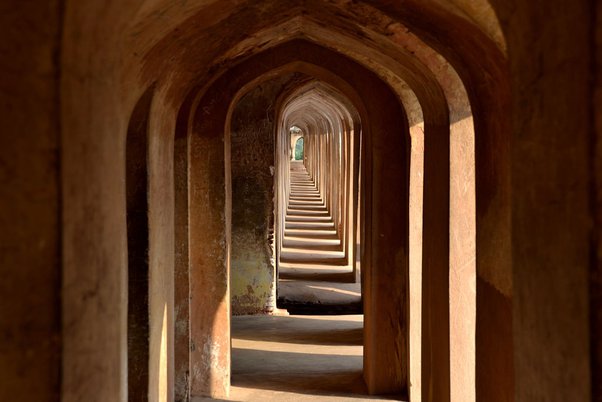Lucknow, the capital of Uttar Pradesh, is a city known for its relaxed pace, amazing food, and some incredible architecture. It is also known for having very few public restrooms (that's less appealing) - in a city of around three million people, there is one public toilet per every 58,844 people. Share that fact with your kid if you want to impress them (or make them laugh)! Hazratganj Market has everything you could want; you can find numerous shopping malls, movie theatres, restaurants, and other establishments inside this area. The best time to visit this market is when the Ganj Carnival is held every second Sunday of the month. Visiting in a warm season? They've got multiple waterparks to cool you down!
One of the most impressive places (which just happens to be the destination for Ravi & Devi in this month’s mystery letters) is called Bada Imambara. The Bada Imambara Complex dates back to 1785; Nawab Asaf - Ud Daula (the Viceroy) had the complex built during the 1785 famine to provide gainful employment for citizens. It took 11 years to complete this project (this is perhaps because - rumor has it - the Nawab instructed the aristocrats of the area to tear down parts of the structure each night to ensure the poor citizens had guaranteed work for a while). Imambara’s are found in many areas throughout India and they are often used for religious purposes or to house the tomb of an important figure. Bada Imambara is the final resting place of its creator, Nawab Asaf - Ud Daula.

There are a couple of distinctly interesting details about this particular Imambara. It is designed with clever engineering that allows for there to be no iron to reinforce structures and no columns or beams for support. The entire weight of the main building rests and is balanced on the arched doors and windows (the architect was the cousin of the architect who designed the Taj Mahal)! But the most interesting area in the complex is probably the Bhool Bhulaiya which is designed to be a labyrinth! There are over 1,000 passages - many of which lead to dead ends - which is why people are highly encouraged to tour this area with a guide. There are 489 matching doors in there as well. The labyrinth was designed to keep intruders lost and confused. It also offered emergency escape routes for the royals, with passages leading to the Gomti River, Delhi, Faizabad, and Allahabad.
I'm not sure about you, but I am not confident I'd ever find my way out with 489 identical doors and 1,000 passages to choose from! But it sure looks beautiful!


